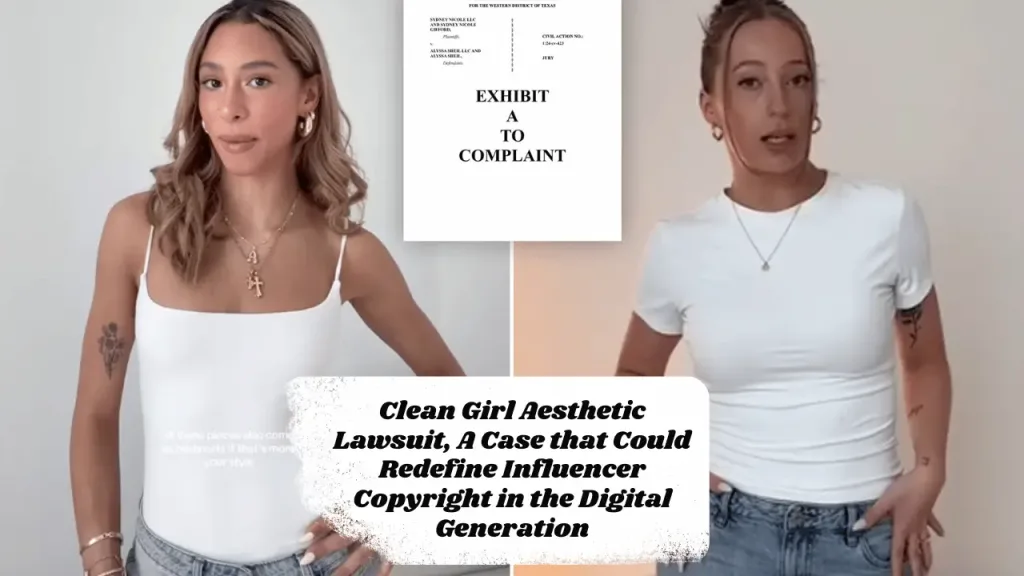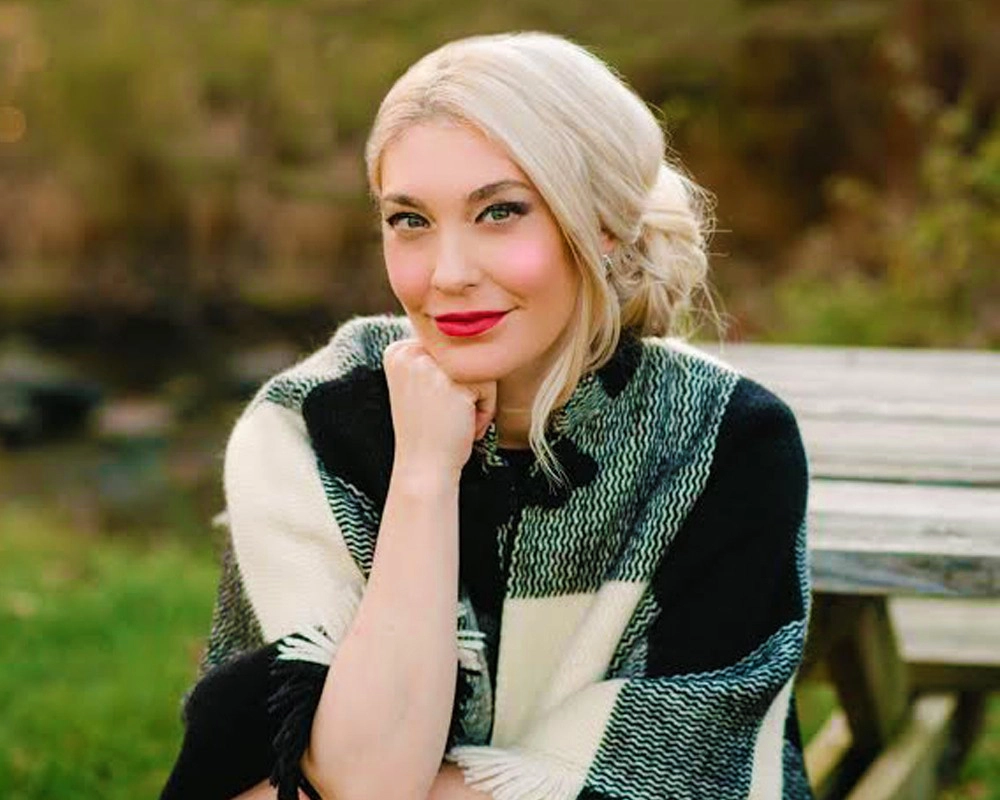Clean Girl Aesthetic Lawsuit, A Case that Could Redefine Influencer Copyright in the Digital Generation
Two social media influencers, Sydney Nicole Gifford and Alyssa Sheil, are locked in a lawsuit over the “clean girl aesthetic”—a minimalist, neutral-toned style that has gained significant popularity on platforms like TikTok and Instagram. This lawsuit not only challenges the ownership of aesthetic styles but also raises questions about intellectual property rights in the influencer space.
What Is the Clean Girl Aesthetic?
The “clean girl aesthetic” is characterized by its emphasis on neutral tones, understated elegance, and a refined, polished appearance. Think beige and cream tones, sleek hairstyles, minimal makeup, and an air of sophistication. Popularized by influencers such as Hailey Bieber, this aesthetic quickly became the visual shorthand for beauty and style across social media.
Sydney Nicole Gifford, a Minnesota-based TikTok creator, claims that she is the originator of this style and alleges that Alyssa Sheil, a Texas-based influencer, copied it, from her living room design to her camera angles, font choices, and even hairstyle. According to Gifford, this began after a meeting in 2023 where the two influencers discussed collaborating. She accuses Sheil of stealing the look and subsequently benefiting financially by posting content that mimicked her personal brand.
Table of Contents
Lawsuit and Its Claims
Filed in late November 2024, the lawsuit asks for up to $150,000 in damages, citing emotional distress and loss of income due to Sheil’s actions. Gifford demands that Sheil remove all content related to the “clean girl aesthetic” and cease using it moving forward. The lawsuit is significant as it challenges the notion that digital aesthetics, especially personal brands and influencer-driven content, should be protected under intellectual property laws.
Gifford’s legal team argues that the copying of specific visual elements and personal style constitutes intellectual property theft. They assert that the aesthetic—comprising her unique design choices and presentation style—represents a personal brand that is easily recognizable across platforms. By copying this style, Sheil not only undermined Gifford’s hard-earned digital presence but also profited from it without permission.
Sheil’s Defense, The Collective Nature of Aesthetics
Alyssa Sheil has denied the allegations, claiming that many influencers share similar aesthetics and that the lawsuit stems from jealousy and a desire for attention. Sheil’s legal team asserts that style and trends in the influencer world are constantly evolving and often overlap, making it difficult, if not impossible, to claim exclusive ownership over an aesthetic.
According to Sheil, the clean girl aesthetic is a broader trend, not an individual creation. Many influencers use similar design principles, and the idea that one influencer can own a style is a misunderstanding of how digital aesthetics function.
This defense underscores a major challenge in influencer copyright law: the difficulty of drawing a line between inspiration and infringement in a world driven by trends. Moreover, Sheil argues that Gifford’s claims are reflective of the competitive nature of the influencer world, where personal style is often borrowed and adapted by others.
Related Articles For You:
Skibidi Toilet Lawsuit, Garry’s Mod Faces DMCA Over Skibidi Toilet Content, How a Meme Sparked a Copyright Controversy
Ryan Day Lawsuit Against Michigan, Shocking Twist in College Football’s Fiercest Rivalry

Broader Implications, Intellectual Property
At its core, the lawsuit raises a crucial question: Can an influencer own an aesthetic, and if so, to what extent can they protect it legally? The outcome of this case could have far-reaching implications for the influencer industry, as it sets a potential precedent for how personal style and creative expression are protected under intellectual property law.
The “clean girl aesthetic” case has already become a talking point for influencers, content creators, and legal experts alike, who are watching closely to see whether this will mark a turning point in the way aesthetics and digital content are viewed legally. If Gifford wins, it could spark a wave of similar lawsuits, as influencers require legal protection for their brand identities and creative work.
On the other hand, if Sheil’s defense is upheld, it could reinforce the notion that digital aesthetics, especially those centered on broader trends, are too fluid to be owned by one individual. This could potentially make it harder for influencers to protect their intellectual property, even as they continue to shape and define new trends on platforms like TikTok and Instagram.
Influence of Aesthetics on the Digital Economy
Influencers are often seen as the modern-day curators of culture, shaping trends and impacting consumer behavior in profound ways. Aesthetic choices—whether in fashion, home decor, or personal style—can become massive drivers of brand collaborations and revenue. For users, understanding the complexities of these legal disputes is essential, particularly if they’re creators themselves or involved in digital marketing.
This case is a stark reminder of how important it is to protect original work, even in an era where digital content is constantly being replicated, modified, and shared. As influencers continue to dominate social media platforms, the legal regulations around content ownership will likely need to evolve to address the unique challenges posed by personal brands and digital aesthetics.
FAQs
What is the Clean Girl Aesthetic Lawsuit about?
The Clean Girl Aesthetic Lawsuit centers around allegations made by Sydney Nicole Gifford, a TikTok influencer, against Alyssa Sheil, another influencer. Gifford claims that Sheil copied her unique aesthetic, including her living room design, font choices, camera angles, and even her hairstyle. Gifford is claiming $150,000 in damages for lost income and emotional distress, arguing that Sheil profited from content that mimicked her personal style.
Why is this lawsuit significant?
This lawsuit is significant because it raises questions about intellectual property rights in the influencer space. Specifically, it challenges whether a personal style or aesthetic, such as the Clean Girl Aesthetic, can be owned and protected under copyright law. The outcome could influence future legal disputes about the ownership of digital aesthetics and personal brands.
What are the legal implications of this case?
If Gifford wins, it could establish a legal precedent for protecting personal styles and digital aesthetics under intellectual property laws. It could also encourage other influencers to file similar lawsuits to protect their unique brands. On the other hand, if Sheil wins, it may reinforce the notion that digital aesthetics—especially those rooted in broader trends—are too general to be copyrighted.
How does Sheil defend herself against these allegations?
Alyssa Sheil denies the allegations, arguing that many influencers share similar aesthetics and that Gifford’s claims are based on competition and jealousy. Sheil’s legal team emphasizes that aesthetics and trends on social media are often collectively adopted and evolve over time, making it difficult to claim exclusive ownership over a specific style.
What could be the outcome of this case?
The outcome is uncertain, but it could have a lasting impact on how personal style and creative work are protected in the influencer industry. If the court rules in favor of Gifford, it may lead to greater legal protections for influencers’ intellectual property. However, if Sheil’s defense prevails, it might set a precedent that personal aesthetics in the influencer world are fair game for others to emulate.
Can influencers copyright their personal style?
Currently, copyright law does not explicitly recognize personal style or aesthetics as protectable. However, if this case leads to a ruling in favor of Gifford, it could pave the way for more legal recognition of influencer-driven aesthetics as a form of intellectual property. This would be groundbreaking for the influencer industry.
What does this lawsuit mean for other influencers?
For other influencers, this lawsuit could either empower them to protect their unique personal brands or serve as a reminder of the challenges of claiming ownership over aesthetics that might be influenced by broader trends. The case will likely have a lasting impact on how influencers approach copyright issues and brand protection in the future.
Why is the lawsuit called the “Sad Beige” case?
The lawsuit has been dubbed the “Sad Beige” case due to the neutral, beige tones that characterize the Clean Girl Aesthetic. The name highlights both the simplicity and the irony of the lawsuit, as it revolves around the ownership of a style that is, by design, understated and minimalist.
Conclusion
The Clean Girl Aesthetic lawsuit is more than just a dispute between two influencers. It is a reflection of the growing tensions in the digital space over ownership, copyright, and originality. It highlights the blurred lines between inspiration and imitation, the growing importance of digital aesthetics, and the challenges of protecting creativity in a rapidly changing social media economy.
As this case unfolds, both users and the digital community will be looking to see how the courts define the boundaries of intellectual property in the world of social media influencers. The outcome could very well redefine how personal brands, aesthetics, and content creation are treated in the eyes of the law.
About the Author

Sarah Klein, JD, is a licensed attorney and legal content strategist with over 12 years of experience across civil, criminal, family, and regulatory law. At All About Lawyer, she covers a wide range of legal topics — from high-profile lawsuits and courtroom stories to state traffic laws and everyday legal questions — all with a focus on accuracy, clarity, and public understanding.
Her writing blends real legal insight with plain-English explanations, helping readers stay informed and legally aware.
Read more about Sarah
